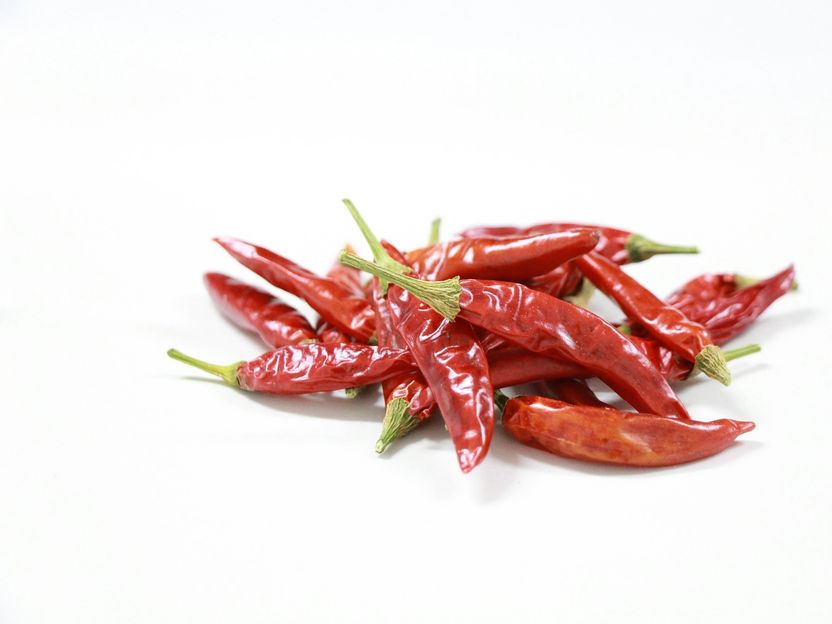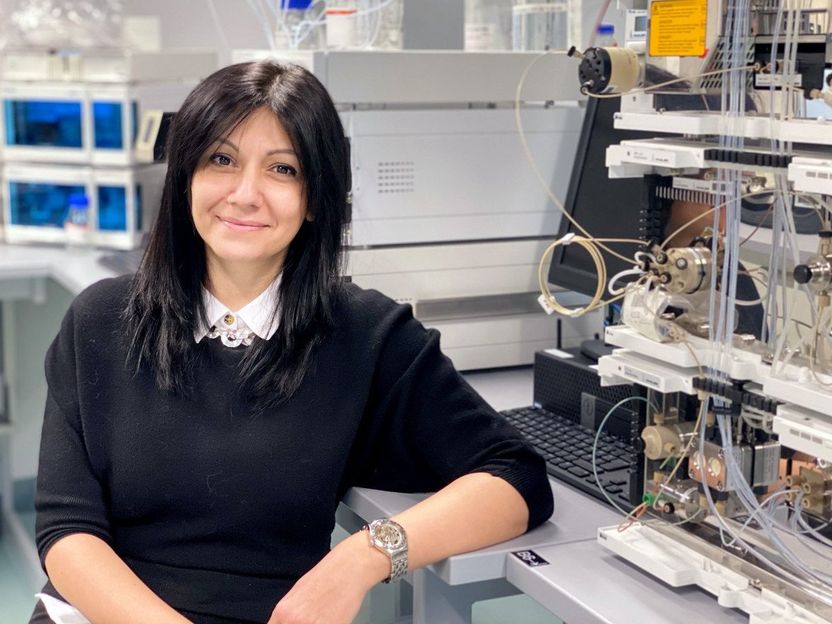Chili peppers and marijuana calm the gut
The active ingredients in both hot peppers and cannabis calm the gut's immune system
You wouldn't think chili peppers and marijuana have much in common. But when eaten, both interact with the same receptor in our stomachs, according to a paper by UConn researchers published in the journal Proceedings of the National Academy of Sciences. The research could lead to new therapies for diabetes and colitis, and opens up intriguing questions about the relationship between the immune system, the gut and the brain.

ch1310, pixabay.com, CC0
Touch a chili pepper to your mouth and you feel heat. And biochemically, you aren't wrong. The capsaicin chemical in the pepper binds to a receptor that triggers a nerve that fires off to your brain: hot! Those same receptors are found throughout the gastrointestinal tract, for reasons that have been mysterious.
Curious, UConn researchers fed capsaicin to mice, and found the mice fed with the spice had less inflammation in their guts. The researchers actually cured mice with Type 1 diabetes by feeding them chili pepper. When they looked carefully at what was happening at a molecular level, the researchers saw that the capsaicin was binding to a receptor called TRPV1, which is found on specialized cells throughout the gastrointestinal tract. When capsaicin binds to it, TRPV1 causes cells to make anandamide. Anandamide is a compound chemically akin to the cannabinoids in marijuana. It was the anandamide that caused the immune system to calm down. And the researchers found they could get the same gut-calming results by feeding the mice anandamide directly.
The brain also has receptors for anandamide. It's these receptors that react with the cannabinoids in marijuana to get people high. Scientists have long wondered why people even have receptors for cannabinoids in their brains. They don't seem to interact with vital bodily functions that way opiate receptors do, for example.
"This allows you to imagine ways the immune system and the brain might talk to each other. They share a common language," says Pramod Srivastava, Professor of Immunology and Medicine at UConn Health School of Medicine. And one word of that common language is anandamide.
Srivastava and his colleagues don't know how or why anandamide might relay messages between the immune system and the brain. But they have found out the details of how it heals the gut. The molecule reacts with both TRPV1 (to produce more anandamide) and another receptor to call in a type of macrophage, immune cells that subdue inflammation. The macrophage population and activity level increases when anandamide levels increase. The effects pervade the entire upper gut, including the esophagus, stomach and pancreas. They are still working with mice to see whether it also affects disorders in the bowels, such as colitis. And there are many other questions yet to be explored: what is the exact molecular pathway? Other receptors also react with anandamide; what do they do? How does ingesting weed affect the gut and the brain?
It's difficult to get federal license to experiment on people with marijuana, but the legalization of pot in certain states means there's a different way to see if regular ingestion of cannabinoids affects gut inflammation in humans.
"I'm hoping to work with the public health authority in Colorado to see if there has been an effect on the severity of colitis among regular users of edible weed," since pot became legal there in 2012, Srivastava says. If the epidemiological data shows a significant change, that would make a testable case that anandamide or other cannabinoids could be used as therapeutic drugs to treat certain disorders of the stomach, pancreas, intestines and colon.
It seems a little ironic that both chili peppers and marijuana could make the gut chill out. But how useful if it's true.
Most read news
Topics
Organizations
Other news from the department science
These products might interest you

Pharmaceutical Substances by Thieme Verlag
Look up Industrial Syntheses of 2,600 APIs
Your tool for Syntheses, Patents and Applications – Pharmaceutical Substances

KNAUER IJM NanoScaler by KNAUER
Efficient formulation of lipid nanoparticles for RNA-based therapies
Optimise drug encapsulation from 1 ml to hundreds of millilitres with minimal drug input

Get the life science industry in your inbox
By submitting this form you agree that LUMITOS AG will send you the newsletter(s) selected above by email. Your data will not be passed on to third parties. Your data will be stored and processed in accordance with our data protection regulations. LUMITOS may contact you by email for the purpose of advertising or market and opinion surveys. You can revoke your consent at any time without giving reasons to LUMITOS AG, Ernst-Augustin-Str. 2, 12489 Berlin, Germany or by e-mail at revoke@lumitos.com with effect for the future. In addition, each email contains a link to unsubscribe from the corresponding newsletter.
More news from our other portals
Last viewed contents
Sexual transmission of Ebola likely to impact course of outbreaks
How a protein in your brain could protect against Alzheimer's disease - New research sets the stage for new therapeutic strategies for Alzheimer's disease
New model finds HIV acute phase infectivity may be lower than previously estimated

KNAUER is expanding its business activities into the field of lipid nanoparticle production equipment - In connection with the development of mRNA-based vaccines against Corona, LNPs have shown to be a suitable delivery form
























































